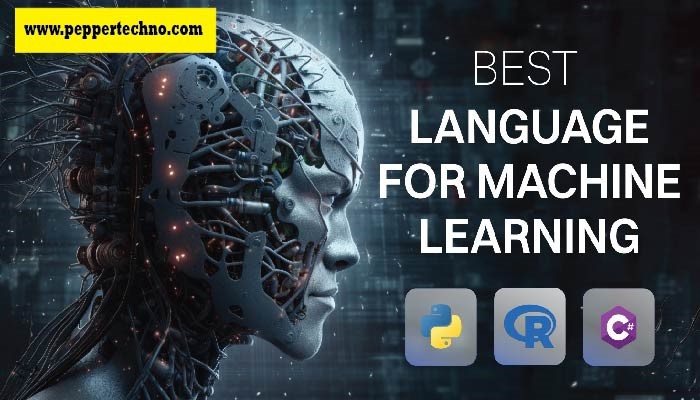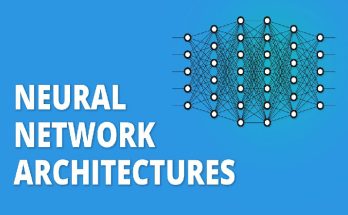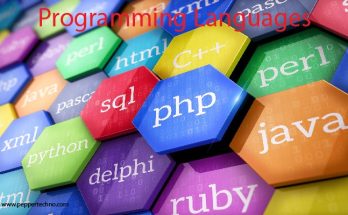Mastering the Code: Language for Machine Learning Demystified
Welcome to the realm where lines of code shape the future – Machine Learning! As we delve into the intricate world of artificial intelligence, one key element stands out: language. In this blog post, we unravel the mysteries surrounding the language for machine learning, from syntax to semantics and everything in between. Get ready to embark on a journey where words and algorithms collide to unlock endless possibilities in the ever-evolving field of technology. Let’s master the code together!

Types of Language for Machine Learning
When delving into the realm of machine learning, understanding the different types of languages used is essential. One prevalent type is declarative language, which focuses on what needs to be achieved rather than how to achieve it. Another type is procedural language, which outlines a step-by-step approach to solving problems.
Functional programming languages are also common in machine learning due to their emphasis on mathematical functions and immutable data structures. Object-oriented languages, on the other hand, organize code around objects and their interactions.
Additionally, domain-specific languages cater specifically to certain tasks within machine learning applications. They are designed for efficiency and ease of use in specialized areas like image recognition or natural language processing.
Each type of language brings its unique strengths and characteristics to the table when developing machine learning models. By choosing the right one based on project requirements and goals, developers can optimize their workflow and enhance overall performance in ML projects.
Syntax and Semantics: Understanding the Basics
When delving into the realm of machine learning, grasping the fundamentals of syntax and semantics is crucial. Syntax refers to the structure and rules governing language, guiding how commands are structured in coding for ML models. On the other hand, semantics dives deeper into the meaning behind these structures, focusing on interpreting data accurately within a given context.
Understanding syntax involves mastering how to correctly form statements and instructions using programming languages like Python or R. This skill ensures that your code is not only functional but also efficient in conveying specific tasks to your algorithm. Meanwhile, delving into semantics allows you to comprehend the significance of different data points within your model’s framework, enabling you to make informed decisions based on this extracted meaning.
In essence, by honing your knowledge of syntax and semantics in machine learning development, you have a smoother path towards creating robust and insightful algorithms that can revolutionize various industries with their predictive capabilities.
Programming Languages for Machine Learning
When diving into the world of machine learning, choosing the right programming language is crucial. Python stands out as a popular choice due to its simplicity and extensive libraries like Tensor Flow and Scikit-learn that streamline model development. R is another powerful language known for its statistical capabilities, making it ideal for data analysis tasks in machine learning projects.
Java remains a strong contender with its scalability and performance benefits, particularly suitable for building robust applications. For those inclined towards speed and efficiency, C++ offers high performance for implementing complex algorithms efficiently.
Additionally, languages like Julia are gaining traction within the machine learning community due to their focus on high performance computing.
Each programming language brings unique strengths to the table, catering to different needs in developing machine learning models effectively.
Natural Language Processing (NLP) and its Role in Machine Learning
Natural Language Processing (NLP) plays a crucial role in machine learning by bridging the gap between human language and computer understanding. It enables machines to comprehend, interpret, and generate human language data. NLP algorithms analyze text and speech data to extract meaning, sentiment, or intent.
By utilizing NLP techniques, machines can perform tasks such as text classification, entity recognition, sentiment analysis, and translation with remarkable accuracy. Through natural language processing models like BERT and GPT-3, computers can even engage in more advanced conversational interactions.
The applications of NLP in machine learning are vast – from chatbots providing customer support to analyzing large volumes of text data for valuable insights. As advancements continue to enhance NLP capabilities, the potential for innovative solutions across various industries expands exponentially.
Tools and Software for Developing Machine Learning Models
When it comes to developing machine learning models, having the right tools and software is essential. These resources empower data scientists and developers to explore complex algorithms and datasets efficiently.
Popular tools like Tensor Flow, Py Torch, and Scikit-learn offer a wide range of functionalities for building, training, and deploying ML models. They provide a user-friendly interface along with robust libraries that simplify the development process.
Software platforms such as Jupyter Notebook enable interactive coding environments where users can experiment with code snippets in real-time. This flexibility supports rapid prototyping and iterative model refinement.
For data preprocessing tasks, tools like Pandas and NumPy are indispensable for handling large datasets effectively. Their high-performance capabilities streamline data manipulation tasks required before training a model.
In addition to these core tools, visualization libraries like Matplotlib and Sea born aid in interpreting model outputs visually. They play a crucial role in understanding the behavior of ML algorithms by plotting graphs or charts based on the processed data.
Leveraging these diverse tools and software enhances productivity in developing machine learning models while enabling innovation within the field.
Challenges and Limitations of Using Language in Machine Learning
When it comes to using language in machine learning, there are various challenges and limitations that developers encounter along the way. One key challenge is ensuring the accuracy and relevance of the data being used to train models. Garbage in, garbage out – this old adage holds true in machine learning as well.
Another hurdle is managing the complexity of natural language understanding. Languages are rich with nuances, idioms, and context-dependent meanings that can trip up even sophisticated algorithms. This complexity often requires extensive preprocessing and feature engineering to extract meaningful insights from text data.
Moreover, language barriers present a significant obstacle in multilingual applications where translation accuracy can impact model performance. Ensuring seamless communication across different languages while maintaining consistency poses a unique challenge for developers working on global projects.
Additionally, privacy concerns surrounding sensitive information contained within textual data raise ethical questions about how language processing should be handled securely and responsibly. As advancements continue to push boundaries in ML-driven language tasks, addressing these challenges will be crucial for achieving successful outcomes in diverse real-world applications.
Tips for Efficiently Using Language in Machine Learning Projects
When working on machine learning projects, mastering the language used is crucial for success. Here are some tips to efficiently use language in your ML endeavors.
Ensure clarity and consistency in your coding practices. Use meaningful variable names and comments to make your code easy to understand for yourself and others.
Leverage libraries and frameworks designed specifically for machine learning tasks. Tools like Tensor Flow or scikit-learn can simplify complex processes and speed up development.
Moreover, stay updated with the latest developments in programming languages commonly used in ML such as Python or R. Continuous learning will enhance your skills and keep you ahead of the curve.
Additionally, collaborate with peers in the field to exchange knowledge and best practices. Engaging with the community can provide valuable insights that may not be evident when working solo.
Always test and iterate on your models to improve performance continually. Experimentation is key to refining algorithms and achieving optimal results in machine learning projects.
Future Outlook and Advancements in Language
As we look ahead to the future of language in machine learning, exciting advancements are on the horizon. One promising area is the integration of more human-like communication abilities into AI systems. This could lead to enhanced interactions between machines and humans, making technology more intuitive and user-friendly.
Additionally, there is a growing focus on developing multilingual models that can understand and process various languages with greater accuracy. This will pave the way for improved global communication and accessibility across different cultures and regions.
Moreover, advancements in neural networks are driving breakthroughs in natural language processing capabilities. These developments hold great potential for enhancing text analysis, sentiment recognition, translation tasks, and other NLP applications.
Innovations in reinforcement learning techniques are also shaping the future landscape of machine learning language models. By enabling algorithms to learn from experience and make decisions based on feedback loops, we can expect smarter and more adaptive systems in diverse fields like robotics, gaming, finance, and healthcare.
As research continues to push boundaries and technology evolves at a rapid pace, the future holds unlimited possibilities for how language will revolutionize machine learning applications worldwide.
Conclusion
In the dynamic world of Machine Learning, language plays a pivotal role in shaping the way algorithms learn and make decisions. From syntax to semantics, programming languages to NLP, mastering the code is key to unlocking the full potential of ML models. As technology continues to advance, so do opportunities for innovation in language for machine learning.
Embracing these advancements and overcoming challenges through efficient use of language can propel ML projects towards success. With a deep understanding of different types of languages available and utilizing tools effectively, developers can create sophisticated models that revolutionize industries.
The future holds promises of even more groundbreaking developments in language for machine learning. By staying informed and adaptable, practitioners can harness these advancements to push boundaries further than ever before.
So remember, whether you’re delving into Python or diving into natural language processing techniques – mastery over the code will be your gateway to creating intelligent systems that shape our future.



